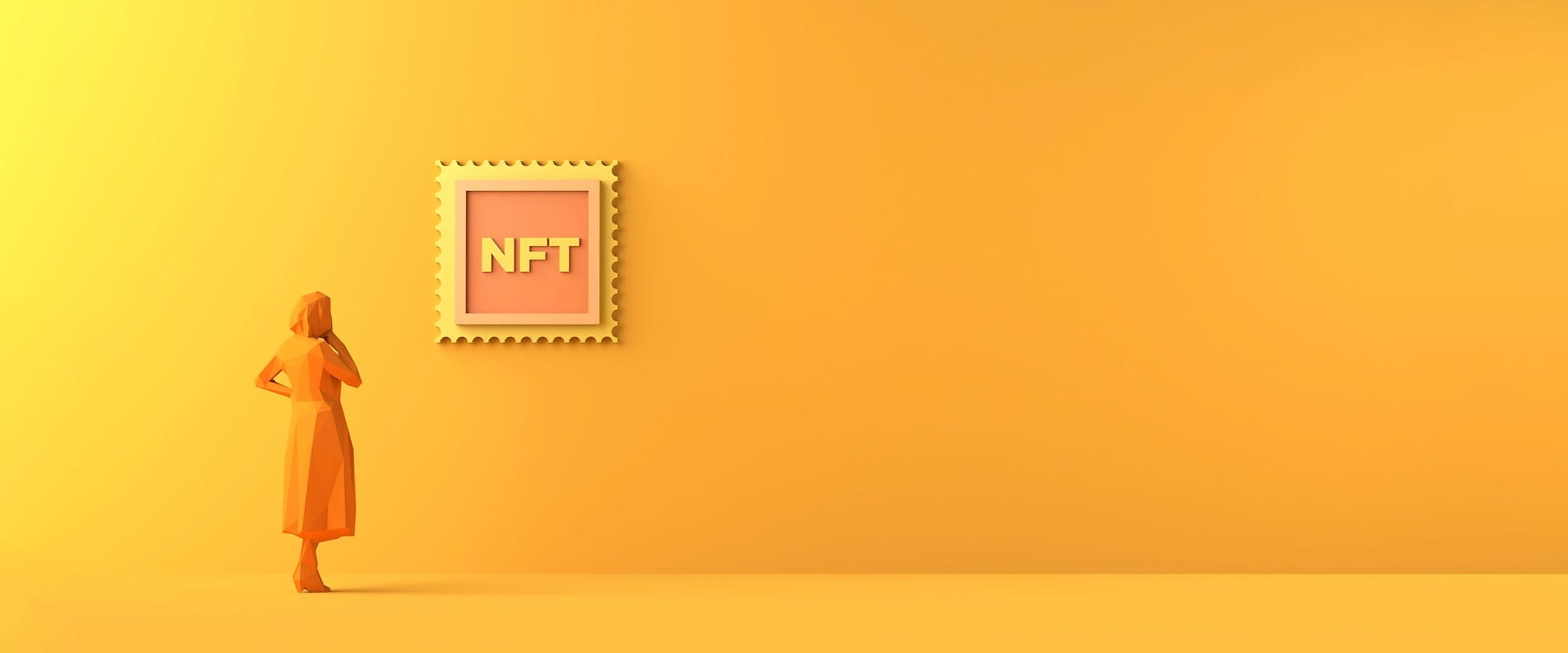Apes wearing sunglasses, apes in Breton sweatshirts, apes with lasers for eyes or nonchalantly chewing on a matchstick. Whether they were adorning X profiles or making headlines, the anthropomorphic, cartoon primates of the Bored Ape Yacht Club enjoyed a moment as the avatars for the non-fungible token industry. Singer Justin Bieber is among the celebrities reported to have bought into the craze, spending almost $1.3 million to acquire a Bored Ape Yacht Club NFT in 2022.
NFTs are digital collectibles: unique, indivisible, durable digital assets on blockchains. They typically represent digital artwork and are sold as a part of collections, and demand for them boomed in recent years. Between 2020 and 2021, when the BAYC was launched, the NFT market grew exponentially, from $94.5 million to just shy of $25 billion, according to Reuters. Since then, even as the BAYC has seen a drop in value, a slew of noncrypto companies and organizations have jumped on board the NFT wagon: Adidas, the NBA, and even the Economist have all created and sold their own digital collectibles.
NFTs have been hard for many people to understand, but research by Temple University’s Sebeom Oh and Samuel Rosen and Chicago Booth’s Anthony Lee Zhang suggests that they are, in some ways, the digital equivalent of luxury goods—albeit with a wrinkle relating to price.
In luxury goods markets, the laws of supply and demand are distorted by certain social forces, says Zhang, that is, by whether a product is coveted by society—in or out of vogue. It’s a case of “demand begetting demand,” he says.
“Consumers demand luxury items principally because other consumers do. People will buy a Rolex because they believe that others want it too, and it sets off a kind of snowball effect. We hypothesize that this is happening in NFT markets too.”
They’re either ‘in’ or they’re ‘out’
Most NFTs didn’t sell much—or they sold out, the research finds. This is consistent with the idea that NFTs are a type of good that consumers want partly because other people want them too.
Oh, Rosen, and Zhang created and tested a predictive framework for understanding NFTs on the basis of the same bimodal demand at work in luxury markets, where a product is either “in” or “out.” They looked at data from OpenSea, the biggest NFT and crypto-collectibles marketplace globally, analyzing more than 6 million NFT transactions, including sales of BAYC, between March 2021 and March 2022.
With newly minted NFT collections, the researchers observe that there was either a rush to buy or items failed to sell—and in which case, issuers ended up selling less than 20 percent of their inventory. This posited something of a tightrope for them in terms of pricing, creating the wrinkle that differentiates the NFT market from luxury goods.
Too high a price or too much supply and demand dropped. And if demand dropped, a collection risked no longer being “in.”
“NFT issuers have to be intentional about underpricing their collections and keeping supply deliberately low, even if demand skyrockets when the collections come out. Any attempt to increase prices could reduce demand. And if demand drops, buyers might conclude the collection is ‘out’ and walk away from it altogether—making it a kind of self-fulfilling cycle in which revenues collapse,” Zhang says.
Because NFTs are strategically underpriced and supply is restricted, the market is prone to another peculiarity—one that is common to luxury markets: flipping for profit.
Zhang, Oh, and Rosen find that certain buyers purchased NFTs in high-demand, low-stock collections at low prices only to sell them at higher prices in secondary markets. This worked because inventory restrictions meant there were willing buyers who couldn’t get hold of a Bored Ape, say, at issuance. And demand wasn’t fragile because the collection was de facto “in” since it had already sold out.
The researchers find that a small set of investors—2.4 percent of wallets were responsible for 50 percent of all transactions in secondary NFT markets—were shrewdly targeting collections that were likely to succeed by entering new mints relatively late, and only when the collection had already picked up substantial sales momentum. These scalpers were exploiting the underpricing strategy in primary markets by flipping “in” collectibles for profit, says Zhang, although the “real winners” in NFT markets remained the issuers.
“It’s tempting to assume that NFT issuers underprice their collections at issuance out of ignorance or error, leaving room for scalpers to make a fast profit at their expense. But we demonstrate that issuers are deliberately underpricing in response to economic distortions where collections are either overdemanded or underdemanded. They’re working in a setting where it’s optimal to set prices that seem to violate the principles of classical economics. And that makes them pretty shrewd.”
Shrewd enough to weather the current crypto crash? The Bitcoin and NFT markets were substantially down in market capitalization at the end of 2023, after the collapse of crypto exchange FTX and other major players. How NFTs will navigate future growth may hinge on their integration with the traditional luxury market, says Zhang.
“A lot of our lives are moving online, so there might be a future in which you want to invest in a digital signature of ownership or a souvenir for your Blockchain wallet tied to your luxury purchase.”
Whether that is a cartoon ape clutching a Hermès bag or brandishing a Rolex remains to be seen.
Sebeom Oh, Samuel Rosen, and Anthony Lee Zhang, “Digital Veblen Goods,” Working paper, December 2023.
Your Privacy
We want to demonstrate our commitment to your privacy. Please review Chicago Booth's privacy notice, which provides information explaining how and why we collect particular information when you visit our website.
